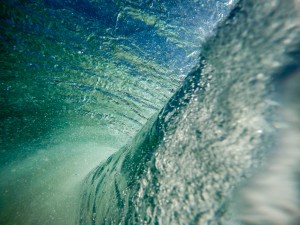You have just gotten home from a long day at work, you still have to make dinner, clean up and do a couple of loads of laundry before you can even think about relaxing. Your partner gives you that look and motions towards the bedroom. You remember the days when you would put all responsibilities aside to frolic in bed with the one you love. But now you are way too tired and would rather just lay on the couch, catching up on Grey’s Anatomy.
Where Have Those Days of Frolicking Gone?
Low libido, low sex drive or hypoactive sexual desire disorder (HSDD, as it is known in the medical world) is one of the most common sexual problems in women. A survey conducted in 2009 at the University of Chicago found that 33.4% of respondents suffered from low libido. Another study published in the Journal of the American Medical Association reported that 43% of women experienced difficulty with sexual desire.
What is Happening?
Low libido is a very complex condition. Fatigue, hormonal imbalances and psychological factors can all play a role in HSDD. Anxiety and depression contribute to the problem and, ironically, so do many pharmaceutical drugs that are used to treat these conditions. Antidepressant medications, the birth control pill and tranquilizers are just some of the drugs that can lower sex drive in women.
What Can You Do?
Get assessed for hormone levels. Your Naturopathic Doctor can order a salivary hormone test to determine your levels of cortisol (the stress hormone), DHEA (the anti-stress/anti-aging hormone), estrogen, progesterone and testosterone (yes, women do produce testosterone). Pre-menopausal and post-menopausal women can suffer from imbalances. There are many natural herbs, vitamins and homeopathic remedies that can be used to bring your hormones back into balance. Typically, women suffering from low libido have low levels of progesterone, testosterone and DHEA. Their estrogen and cortisol levels are most likely out of balance as well.
Get assessed for thyroid function. A low-functioning thyroid zaps your energy, lowers your mood and reduces sexual desire.
Get your iron levels and vitamin B12 levels checked. These are commonly low in females, and deficiencies result in fatigue and low motivation.
Talk to your doctor about any possible side effects your medication(s) may be having. Anti-depressants and the birth control pill are common culprits. Ask your doctor about changing to other kind of medications with fewer side effects. Never stop taking medication without consulting with your doctor first.
Get help from your healthcare practitioner if you are suffering from stress, anxiety or depression. Don’t go it alone.
Spice it up. Try a new position in bed, focus on foreplay, be spontaneous, pick up some new toys, watch a video and/or give each other a massage. This will add to the excitement and get you in the mood. Physical touch can increase the release of oxytocin, the bonding hormone, which can bump up sexual desire.
Natural Ways to Increase Libido
Since HSDD is such a complex condition with many causes, make sure you are assessed to determine which treatment is suitable for you to boost libido. Here is a list of commonly used herbs to help bring your mojo back. Be sure to consult with your licensed healthcare practitioner before taking them.
Ashwaganda, Relora, Rhodiola, Licorice, Siberian Ginseng and other adaptogenic herbs help to increase energy, reduce stress and put that spring back into your step!
Damiana acts as a natural aphrodisiac and sexual stimulant. Ginseng may also increase sexual desire.
Maca is a wonderful herb to reduce stress, increase energy, bring your hormones back into balance, and support a healthy libido. It is a root from South America and can be found in capsule or powder form.
Ginkgo increases blood flow to the female genitalia, heightening arousal and orgasm.
Exercise also gets the blood flowing, reduces stress, and boosts mood and energy. It increases the release of natural feel-good endorphins, and improves self-esteem and body image. A study done at the University of Texas showed that women who had just completed one 20-minute session of cardio exercise were more aroused (as measured and self-reported) from an erotic film than those who didn’t exercise.
Eat Your Way to Desire
Garlic, cayenne and ginger all increase blood flow in the body and to the genitalia. Eat these regularly to increase arousal. Just make sure you share that garlicky meal with your partner!
Nuts and seeds contain L-arginine, which helps to relax blood vessels and increase blood flow to the sexual organs. Make sure to eat them unsalted and raw to get the most benefits. Choose pumpkin seeds, almonds, walnuts, Brazil nuts and sunflower seeds.
Chocolate contains phenylethylamine (PEA), which boosts levels of endorphins, reduces depression and anxiety, and is one of the brain hormones that is released when we are in love. Go for dark chocolate to get those extra antioxidants. PEA may be increased by exercise, yet another reason to put on those running shoes!
Don’t worry. With some help, frolicking in bed can become a reality once again!
Disclaimer: The information provided in this article is not meant to replace treatment with a licensed healthcare practitioner. It is for informational purposes only. Consult with a Naturopathic Doctor or other licensed healthcare professional to determine which treatments are safe for you.


